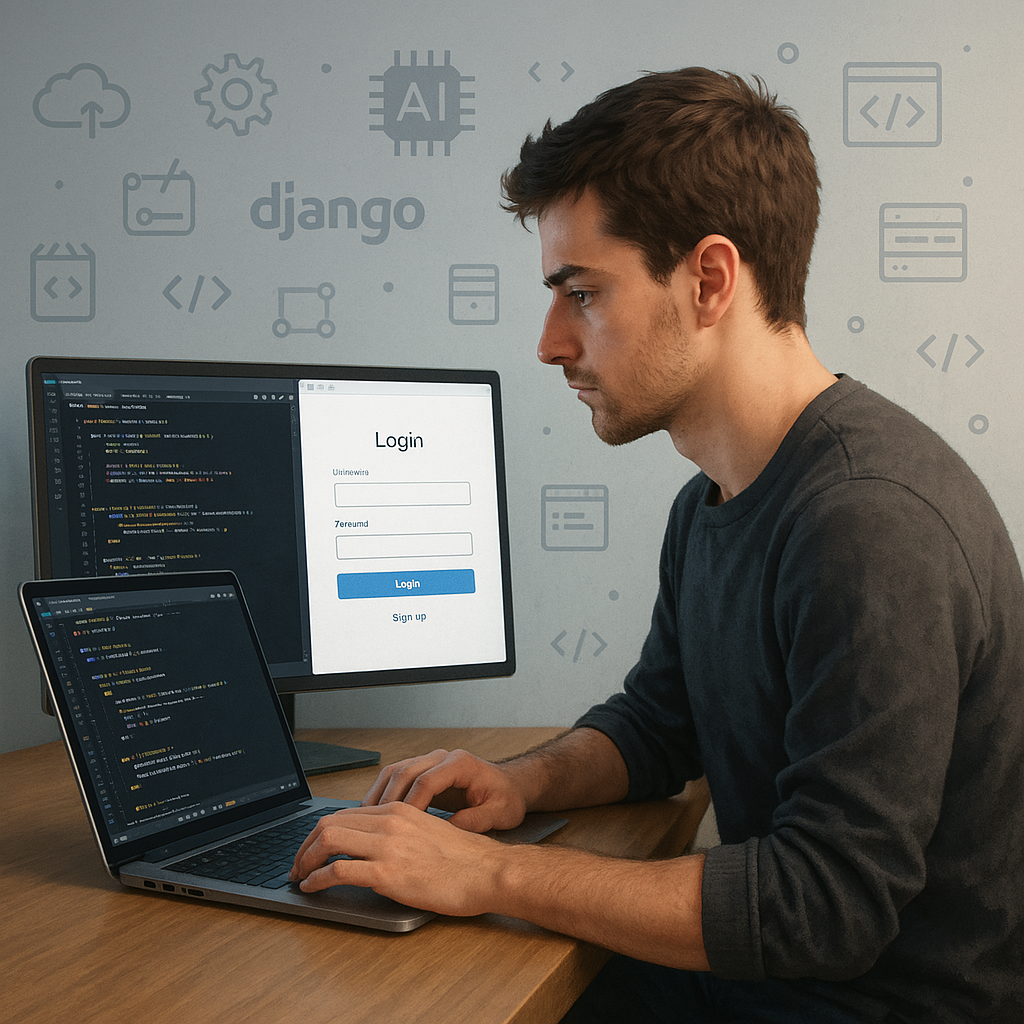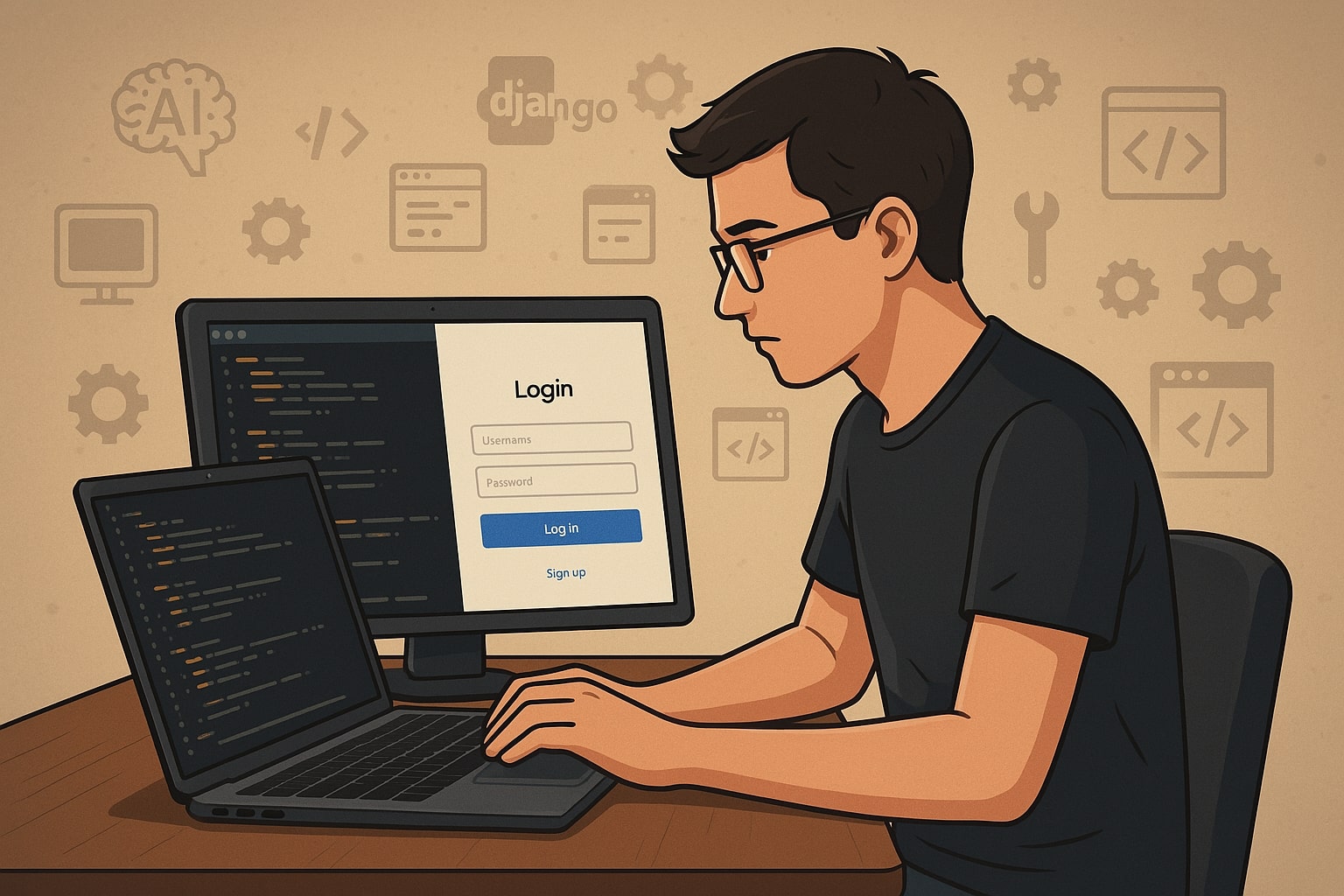Introduction: The Best Way to Learn Is by Doing
“The best way to learn is by doing.”
I’ve heard this countless times—but only when I put it into action did I realize just how true it is.
A few weeks ago, I decided to build an AI-powered web application from scratch. The challenge? I had never used Django before. I knew the theory, sure. But using Django to build something real, functional, and user-ready? That was new territory.
So, with this project, after just three hours of Django tutorials, I decided to jump in and build something real. What happened next? I learned more in a week of hands-on coding than in months of structured courses.
This is the story of how learning by doing transformed my understanding of Django, AI integration, and web development as a whole. If you’re stuck in tutorial hell, this might be the nudge you need to start building.
Introducing the Project: A Django-Powered AI Web App
What I Built
I set out to create a web app that leverages AI to perform intelligent tasks. The core features included:
- A Django backend handling business logic.
- User authentication & role-based permissions (because what’s a web app without security?).
The AI features are currently under wraps, but this is an exciting project with the potential to impact thousands—possibly even millions. Can’t wait to share more details with you soon!
My Learning Path
- Started from scratch with Django (minimal prior experience).
- Integrated existing AI functionalities into a web interface.
- Learned Django’s ORM, middleware, and auth system on the fly.

Learning by Doing: The Real Education
Why Building Forces Real Understanding
Tutorials teach you how to follow instructions—building teaches you how to solve problems. Here’s what I learned by diving in:
- Debugging Is the Best Teacher
- Tutorials rarely cover edge cases. When building any functionality, fixing the errors/bugs or when it broke, I had to dig into the thing and fix it.
- Errors reinforced my understandings. Thanks to my personal error resolving strategy.
- Django’s ORM Became Intuitive
- Instead of memorizing syntax, I wrote real code for my app’s needs.
- Learned about model relationships, migrations, and performance optimizations the hard (but effective) way.
- Middleware & Authentication Made Sense
- Tutorials explain what middleware is—building showed me when and why to use it.
- Implementing role-based access control (RBAC) taught me security best practices.
Got it. Here’s a more polished and expanded version of that line:
Artificial Intelligence played a pivotal role throughout the entire development journey—whether it was optimizing backend processes, improving decision-making, or enabling features that would’ve otherwise taken significantly more time and effort to build manually. It truly amplified both the speed and quality of the work.
The Speed of Progress
Once I started coding, my learning accelerated exponentially. Concepts that seemed abstract in tutorials became concrete because I had to make them work.
A Quick Glimpse at My Past Project: PDF Compressor API
Before Django, I built a standalone PDF compressor microservice with:
- A FastAPI backend (my first real API project).
- Integration into WordPress via a custom plugin.
This small win gave me the confidence to tackle bigger challenges, like Django.
Key Takeaway:
Every project, no matter how small, builds momentum and confidence for the next one.
Why You Should Start Building Too
If you’re stuck in tutorial limbo, here’s your sign to start building.
3 Realistic Tips to Begin
- Pick an Idea You Care About
- It’s easier to stay motivated when you’re solving a real problem.
- Break It into Small Features
- Start with a minimal version (e.g., user login → AI integration → UI polish).
- Don’t Over-Optimize Early
- Your first draft will be messy—refactor and optimize once the feature is complete.
The Hidden Benefits
- Portfolio-ready work to showcase.
- Real problem-solving skills employers value.
- Confidence to tackle harder projects.
Conclusion: Stop Watching, Start Building
Looking back, building this Django app reshaped my learning approach. Passive consumption can only take you so far—true mastery comes from doing.
So, I’ll leave you with two questions:
- Have you ever learned more from a project than a course?
- What are you working on these days?
Drop your thoughts below—or share this post with someone who needs a nudge to start building.
Remember: The best time to code was yesterday. The second-best time is now. 🚀
